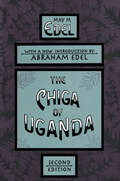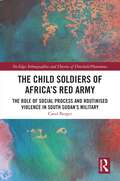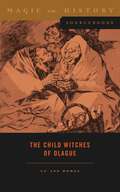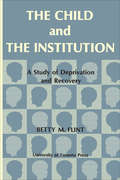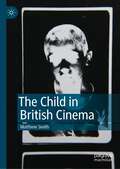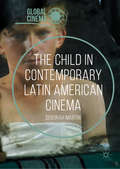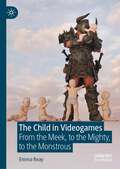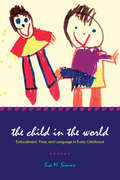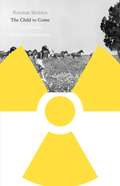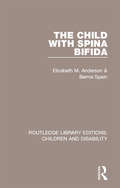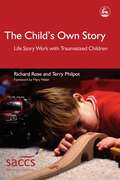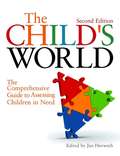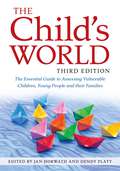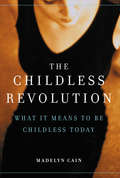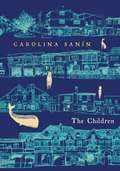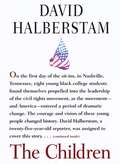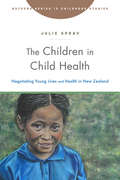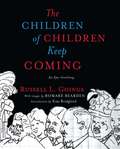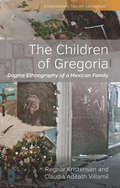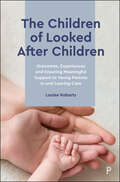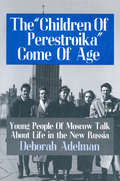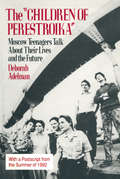- Table View
- List View
The Chiga of Uganda
by May M. EdelMay Edel's The Chiga of Uganda is in the grand tradition of Franz Boas, Margaret Mead, and Leslie Spier. Written at a time when older ways were menaced by contact with other cultures, Edel's effort was part of a descriptive urgency that aimed to capture the past before the past disappeared. And that past should be viewed from the perspective of the people themselves, by students going into the field to observe, question, and report. This book is an enlarged and amplified edition of The Chiga of Western Uganda published in 1957 by the Oxford University Press for the International African Institute. It is enlarged by a major section on material culture hitherto unpublished.The Chiga of Uganda provides a special insight into a culture at that time (1933) still intact under the British protectorate. It is for the most part a picture of life as it was then still being lived. Where significant changes were already taking place, the various changes are discussed in the contexts in which they seemed relevant—in social structure, kinship, marriage, economics, social control, religion, and education.What makes this edition unique is the new segment on material culture. This delves into Chiga patterns of food supply and preparation, horticulture, fire and heating, water supplies, cattle raising, hunting, fishing, and problems related to shelter, clothing, and hygiene. Two new special sections deal with tools and utensils, and, no less important, the physical skills and motor habits of the people. Edel's concrete yet wide-ranging descriptions provide an irreplaceable insight into a people and a culture at a unique point in world and colonial history.The new introduction, written by Abraham Edel, provides a special sort of insight, drawing heavily upon the correspondence that May Edel wrote at the time. The introduction shows how the clouds of war and Nazism in Europe at the time were already changing the character and context of anthropology no less than every other area of human endeavor. A final new aspect of The Chiga of Uganda is May Edel's last reflections focusing on African tribalism, which turns out to be not all that different from ethnic and national rivalries in the Western world. This book will be indispensable to anthropologists, Africanists, and historians.
The Child Gaze: Narrating Resistance in American Literature (Children's Literature Association Series)
by Amanda M. GreenwellThe Child Gaze: Narrating Resistance in American Literature theorizes the child gaze as a narrative strategy for social critique in twentieth- and twenty-first-century US literature for children and adults. Through a range of texts, including James Baldwin’s Little Man, Little Man, Mildred D. Taylor’s Roll of Thunder, Hear My Cry, Toni Morrison’s The Bluest Eye, Gene Luen Yang’s American Born Chinese, and more, Amanda M. Greenwell focuses on children and their literal acts of looking. Detailing how these acts of looking direct the reader, she posits that the sightlines of children serve as signals to renegotiate hegemonic ideologies of race, ethnicity, creed, class, and gender. In her analysis, Greenwell shows how acts of looking constitute a flexible and effective narrative strategy, capable of operating across multiple points of view, focalizations, audiences, and forms. Weaving together scholarship on the US child, visual culture studies, narrative theory, and other critical traditions, The Child Gaze explores the ways in which child acts of looking compel readers to look at and with a child character, whose gaze encourages critiques of privileged visions of national identity. Chapters investigate how child acts of looking allow texts to redraw circles of inclusion around the locus of the child gaze and mobilize childhood as a site of resistance. The powerful child gaze can thus disrupt dominant scripts of power, widening the lens through which belonging in the US can be understood.
The Child Soldiers of Africa's Red Army: The Role of Social Process and Routinised Violence in South Sudan's Military (On Edge: Ethnographies and Theories of Threshold Phenomena)
by Carol BergerThis book examines the role of social process and routinised violence in the use of underaged soldiers in the country now known as South Sudan during the twenty-two-year civil war between Sudan’s northern and southern regions. Drawing on accounts of South Sudanese who as children and teenagers were part of the Red Army—the youth wing of the Sudan People’s Liberation Army (SPLA)— the book sheds light on the organised nature of the exploitation of children and youth by senior adult figures within the movement. The book also includes interviews with several of the original Red Army commanders, all of whom went on to hold senior positions within the military and government of South Sudan. The author chronicles the cultural transformation experienced by members of the Red Army and considers whether an analysis of the processes involved in what was then Africa’s longest civil war can aid our understanding of South Sudan’s more recent descent into ethnicised conflict. As such, it will appeal to scholars of sociology, anthropology and political science with interests in ethnography, conflict and the military exploitation of children.
The Child Witches of Olague (Magic in History Sourcebooks)
by Lu Ann HomzaIn the early seventeenth century, thousands of children in Spain’s Navarre region claimed to have been bewitched. The Child Witches of Olague features the legal depositions of self-described child witches as well as their parents and victims. The volume sheds new light on Navarre’s massive witch persecution (1608–14), illuminating the tragic cost of witch hunts and opening a new window onto our understanding of early modern Iberian life. Drawing from Spanish-language sources only recently discovered, Homza translates and annotates three court cases from Olague in 1611 and 1612. Two were defamation trials involving the slur “witch,” and the third was a petition for divorce filed by an accused witch and wife. These cases give readers rare access to the voices of illiterate children in the early modern period. They also speak to the emotions of witch-hunting, with testimony about enraged, terrified parents turning to vigilante justice against neighbors. Together the cases highlight gender norms of the time, the profound honor code of early modern Navarre, and the power of children to alter adult lives. With translations of Inquisition correspondence and printed pamphlets added for context, The Child Witches of Olague offers a portrait of witch-hunting as a horrific, contagious process that fractured communities. This riveting, one-of-a-kind book will appeal to anyone interested in the history of witch hunts, life in early modern Spain, and history as revealed through court testimony.
The Child and the Institution: A Study of Deprivation and Recovery
by Betty FlintIt has long been believed that children who must spend much of their lives in institutions inevitably develop personality deficiencies that make them liabilities to society. This book represents the first portion of a longitudinal study of the children of the Neil McNeil Home from infancy into adulthood. The study was begun in 1957 with a twofold purpose: first, to provide a therapeutic environment for children who had already suffered mental and emotional damage from an institutional milieu; and second, to devise methods of institutional care that would conduce to the normal development of children deprived of the usual supports of family relationships. The case histories presented here are interesting documents in themselves, but the book is more than a study of individual cases. It presents a detailed description of the process of creating in a child-care institution something of the atmosphere of a normal home. The conclusions reached depart in significant ways from former studies of institutionalized children, and will be of great importance and usefulness both to those who work professionally with children and to those concerned with the social future of children raised outside the family unit. The book was sponsored by the Institute of Child Study, University of Toronto.
The Child in British Cinema
by Matthew SmithThis book argues that over the twentieth and twenty-first centuries, the cinema in Britain became the site on which childhood was projected, examined, and understood. Through an analysis of these projections; via case studies that encompass early cinema, pre and post-war film, and contemporary cinema; this book interprets the child in British cinema as a device through which to reflect upon issues of national culture, race, empire, class, and gender. Beginning with a discussion of early cinematic depictions of the child in Britain, this book examines cultural expressions of nationhood produced via non-commercial cinemas for children. It considers the way cinema encroaches on the moral edification of the child and the ostensible vibrancy and vitality of the British boy in post-war cinema. The author explores the representational and instrumental differences between depictions of boys and girls before extending this discussion to investigate the treatment of migrant, refugee, and immigrant children in British cinema. It ends by recapitulating these arguments through a discussion of internationally successful British blockbuster cinema. The child in this study is a mobile figure, deployed across generic boundaries, throughout the history of British cinema and embodying a range of discourses regarding the health and wellbeing of the nation.
The Child in Contemporary Latin American Cinema (Global Cinema)
by Deborah MartinWhat is the child for Latin American cinema? This book aims to answer that question, tracing the common tendencies of the representation of the child in the cinema of Latin American countries, and demonstrating the place of the child in the movements, genres and styles that have defined that cinema. Deborah Martin combines theoretical readings of the child in cinema and culture, with discussions of the place of the child in specific national, regional and political contexts, to develop in-depth analyses and establish regional comparisons and trends. She pays particular attention to the narrative and stylistic techniques at play in the creation of the child's perspective, and to ways in which the presence of the child precipitates experiments with film aesthetics. Bringing together fresh readings of well-known films with attention to a range of little-studied works, The Child in Contemporary Latin American Cinema examines films from the recent and contemporary period, focussing on topics such as the death of the child in ‘street child’ films, the role of the child in post-dictatorship filmmaking and the use of child characters to challenge gender and sexual ideologies. The book also aims to place those analyses in a historical context, tracing links with important precursors, and paying attention to the legacy of the child’s figuring in the mid-century movements of melodrama and the New Latin American Cinema.
The Child in Videogames: From the Meek, to the Mighty, to the Monstrous
by Emma ReayDrawing across Games Studies, Childhood Studies, and Children’s Literature Studies, this book redirects critical conversations away from questions of whether videogames are ‘good’ or ‘bad’ for child-players and towards questions of how videogames produce childhood as a set of social roles and rules in contemporary Western contexts. It does so by cataloguing and critiquing representations of childhood across a corpus of over 500 contemporary videogames. While child-players are frequently the topic of academic debate – particularly within the fields of psychology, behavioural science, and education research - child-characters in videogames are all but invisible. This book's aim is to make these child-characters not only visible, but legible, and to demonstrate that coded kids in virtual worlds can shed light on how and why the boundaries between adults and children are shifting.
The Child in the World: Embodiment, Time, and Language in Early Childhood
by Eva M. SimmsA dialogue between developmental research and continental philosophy that illuminates how children experience the world.
The Child to Come: Life after the Human Catastrophe
by Rebekah SheldonGeneration Anthropocene. Storms of My Grandchildren. Our Children&’s Trust. Why do these and other attempts to imagine the planet&’s uncertain future return us—again and again—to the image of the child? In The Child to Come, Rebekah Sheldon demonstrates the pervasive conjunction of the imperiled child and the threatened Earth and blisteringly critiques the logic of catastrophe that serves as its motive and its method. Sheldon explores representations of this perilous future and the new figurations of the child that have arisen in response to it. Analyzing catastrophe discourse from the 1960s to the present—books by Joanna Russ, Margaret Atwood, and Cormac McCarthy; films and television series including Southland Tales, Battlestar Galactica, and Children of Men; and popular environmentalism—Sheldon finds the child standing in the place of the human species, coordinating its safe passage into the future through the promise of one more generation. Yet, she contends, the child figure emerges bound to the very forces of nonhuman vitality he was forged to contain. Bringing together queer theory, ecocriticism, and science studies, The Child to Come draws on and extends arguments in childhood studies about the interweaving of the child with the life sciences. Sheldon reveals that neither life nor the child are what they used to be. Under pressure from ecological change, artificial reproductive technology, genetic engineering, and the neoliberalization of the economy, the queerly human child signals something new: the biopolitics of reproduction. By promising the pliability of the body&’s vitality, the pregnant woman and the sacred child have become the paradigmatic figures for twenty-first century biopolitics.
The Child with Spina Bifida (Routledge Library Editions: Children and Disability #3)
by Elizabeth M. Anderson Bernie SpainFirst published in 1977, this book focuses on the disability of spina bifida in children. Children with the condition frequently suffer with severe physical handicaps such as lower limb paralysis and incontinence, as well as intellectual impairment. It can be difficult for the families of these multiply handicapped children and they often require the help of professionals from many disciplines. In this book, the authors focus on practical suggestions for alleviating many of the problems brought about by the condition. Their suggestions are designed to help parents, as well as professionals.
The Child's Own Story: Life Story Work with Traumatized Children
by Richard Rose Terry Philpot Mary WalshHelping traumatized children develop the story of their life and the lives of people closest to them is key to their understanding and acceptance of who they are and their past experiences. The Child's Own Story is an introduction to life story work and how this effective tool can be used to help children and young people recover from abuse and make sense of a disrupted upbringing in multiple homes or families. The authors explain the concepts of attachment, separation, loss and identity, using these contexts to describe how to use techniques such as family trees, wallpaper work, and eco- and geno-scaling. They offer guidance on interviewing relatives and carers, and how to gain access to key documentation, including social workers' case files, legal papers, and health, registrar and police records. This sensitive, practice-focused guide to life story work includes case examples and exercises, and is an invaluable resource for social workers, child psychotherapists, residential care staff, long-term foster carers and other professionals working with traumatized children.
The Child's World
by Edited by Jan HorwathThis new and updated edition of the best-selling book on assessing children in need and their families integrates practice, policy and theory to produce a comprehensive and multidisciplinary guide to all aspects of assessment. The Child's World not only provides an explanation of the Framework for the Assessment of Children in Need and their Families, but also offers a wealth of information on how to use it sensitively and effectively. The Child's World explores the implications of recent legislation, including the Children Act 2004, and national guidance for assessment practice. The contributors have drawn on the latest research, best practice and lessons learnt over the past decade of Framework implementation to equip practitioners, from different disciplines, to identify the developmental needs of children, assess parental capacity and evaluate the impact of family, economic and environmental factors on the carer's ability to meet the needs of the child. This book is essential reading for all practitioners, managers, trainers and educators in children's and adult services who use the Framework, and will also be a valued source of knowledge and guidance for those assessing children's needs in legislative contexts outside of England.
The Child's World, Third Edition: The Essential Guide to Assessing Vulnerable Children, Young People and their Families
by Julie Taylor David Jones Michael Murphy Emma Palmer Gillian Ruch David Shemmings Yvonne Shemmings Jane Barlow Danielle Turney Dendy Platt Audrey Tait Helen Wosu Arnon Bentovim Jenny Gray Claudia Bernard Simon Hackett Jan Horwath Emily Munro Stephen Pizzey Michaela Rogers Ruth Marchant Emilie Smeaton Beth Tarleton Nadine Tilbury Katherine Bishop Dave Backwith Christine Gould Barbara Lawrie Jane Appleton Karen Whittaker Stan Houston Aideen Naughton Liz Hadcroft Dawn Hodson Patrick NeilThis definitive textbook provides accessible information on best practice for assessing the needs and strengths of vulnerable children and their families. It explores the challenges that practitioners face routinely - with suggestions as to how to address them - as well as the established areas for assessment, of children's developmental needs, parenting ability and motivation, and socio-economic factors. This new edition has been extended substantially to include recent practice, policy and theoretical developments, such as understanding the lived experience of children, young people, and family members. It also considers children's neurological development, assessing parental capacity to change, early help assessments, emerging areas of practice such as child sexual exploitation, and working with asylum-seeking and trafficked children.Crucially, this updated edition takes a broader approach in offering relevant information to a range of professionals working with vulnerable children. The importance of inter-professional working is emphasised throughout.
The Childhood of the Poor
by Alysa LeveneWas there a notion of childhood for the labouring classes, and was it distinctive from that of the elite? Examining pauper childhood, family life and societal reform, Levene asks whether new models of childhood in the eighteenth century affected the treatment of the young poor, and reveals how they and their families were helped through hard times.
The Childless Revolution
by Madelyn CainThanks in part to birth control, delayed marriages, and the emergence of two-career couples, 42% of the adult female population is childless, representing the fastest-growing demographic group to emerge in decades. Alternately pitied and scorned, childless women are rarely asked directly about the reasons for their status; the elephant in the living room, childlessness is a taboo subject. Asking the hard questions, Madelyn Cain uncovers the many reasons for childlessness--from infertility to a focus on a career to even political action--and explores the ramifications, both personal and sociological. Simultaneously compassionate and journalistically curious, The Childless Revolution is informed by the stories of over 100 childless women, at long last giving voice to their experience and validating the jumble of emotions women feel about being a part of such a controversial population. For childless women and their families everywhere, this is the first--and long overdue--book to put a face on women who have made a largely misunderstood reproductive choice.
The Children
by Carolina SanínOne day, as she enters her local supermarket, Laura Romero has a startling encounter with a beggar, who seems to offer her a child. A short while later, in the middle of the night, she discovers a mysterious young boy on the pavement outside her apartment building: Fidel, who is six years old, a child with seemingly no origins or meaning. With few clues to guide her as she tries to discover his real identity, Laura finds herself swept into a bureaucratic maelstrom of fantastical proportions. From the National Institute for the Welfare of Families to the Hearth & Home Centre, from imagined worlds to lost loves, The Children explores the limits of isolation and intimacy, motherhood, neglect and compassion, filtered through the lives of two lonely people, whose coming together is less for company and more to share their loneliness.A tender, intelligent novel from a startling and brilliant new voice in English translation.Translated from the Spanish by Nick Caistor
The Children
by David HalberstamThe Children is David Halberstam's brilliant and moving evocation of the early days of the civil rights movement, as seen through the story of the young people--the Children--who met in the 1960s and went on to lead the revolution. Magisterial in scope, with a strong you-are-there quality,The Children is a story one of America's preeminent journalists has waited years to write, a powerful book about one of the most dramatic movements in American history. They came together as part of Reverend James Lawson's workshops on nonviolence, eight idealistic black students whose families had sacrificed much so that they could go to college. And they risked it all, and their lives besides, when they joined the growing civil rights movement. David Halberstam shows how Martin Luther King, Jr. recruited Lawson to come to Nashville to train students in Gandhian techniques of nonviolence. We see the strength of the families the Children came from, moving portraits of several generations of the black experience in America. We feel Diane Nash's fear before the first sit-in to protest segregation of Nashville lunch counters, and then we see how Diane Nash and others--John Lewis, Gloria Johnson, Bernard Lafayette, Marion Barry, Curtis Murphy, James Bevel, Rodney Powell--persevered until they ultimately accomplished that goal. After the sit-ins, when the Freedom Rides to desegregate interstate buses were in danger of being stopped because of violence, it was these same young people who led the bitter battle into the Deep South. Halberstam takes us into those buses, lets us witness the violence the students encountered in Montgomery, Birmingham, Selma. And he shows what has happened to the Children since the 1960s, as they have gone on with their lives. The Children bears the trademark qualities that have made David Halberstam one of the leading nonfiction writers of our era. The Children is his most personal book since The Best and the Brightest, a magnificent re-creation of a unique period in America, and of the lives of the ordinary people whose courage and vision changed history.
The Children in Child Health: Negotiating Young Lives and Health in New Zealand (Rutgers Series in Childhood Studies)
by Julie SprayWho are the children in child health policy? How do they live and see the world, and why should we know them? A journey into the lives of children coping in a world compromised by poverty and inequality, The Children in Child Health challenges the invisibility of children’s perspectives in health policy and argues that paying attention to what children do is critical for understanding the practical and policy implications of these experiences. In the unique context of indigenous Māori and migrant Pacific children in postcolonial New Zealand, Julie Spray explores the intertwining issues of epidemic disease, malnutrition, stress, violence, self-harm, and death to address the problem of how scholars and policy-makers alike can recognize and respond to children as social actors in their health. The Children in Child Health innovatively combines perspectives from childhood studies, medical anthropology, and public health and policy together with evocative ethnography to show how a deep understanding of children’s worlds can change our approach to their care.
The Children of Children Keep Coming
by Kim Bridgford Russell L GoingsThe Children of Children Keep Coming is an awe-inspiring contribution to literature. A breathtaking form of poetic expression, this unique work presents a riveting chronicle of the African American experience in the United States. The dramatic odyssey opens with two anonymous slaves running to catch the Freedom Train, where at journey's end they hope to find liberation. Along the way, they encounter fields of laborers sowing seeds, plodding hard under sun high and moon low, working to end slavery. The toilers are sustained by work songs that at one moment express the dreams and fears of the downtrodden and at another moment burst forth with unbound faith and optimism. These determined travelers, with dangerous crows circling around them, roam through fields holding their dead; step over graves of the once enslaved; walk across beds of red, white, and blue flowers, all for the opportunity to march on the green lawns of democracy. Throughout their entangled journey, they meet imaginary and mythological characters. But it is down by the riverside where their belief that a time of change will come is affirmed by engagements with "giants" such as Frederick Douglass, Billie Holiday, Hank Aaron, Sojourner Truth, and Rosa Parks. The Children of Children Keep Coming is strung seamlessly together -- by poetry and prose, blues and gospel, hymns and jazz, work songs and prayers -- forcing the universal harmony of the cry for freedom and justice to reach an unforgettable pitch that cannot be ignored. This astounding mosaic of voices is accentuated by the images of Romare Bearden.
The Children of Chinatown
by Wendy Rouse JoraeRevealing the untold stories of a pioneer generation of young Chinese Americans, this book places the children and families of early Chinatown in the middle of efforts to combat American policies of exclusion and segregation. <P><P>Wendy Jorae challenges long-held notions of early Chinatown as a bachelor community by showing that families--and particularly children--played important roles in its daily life. She explores the wide-ranging images of Chinatown's youth created by competing interests with their own agendas--from anti-immigrant depictions of Chinese children as filthy and culturally inferior to exotic and Orientalized images that catered to the tourist's ideal of Chinatown. <P><P> All of these representations, Jorae notes, tended to further isolate Chinatown at a time when American-born Chinese children were attempting to define themselves as Chinese American. Facing barriers of immigration exclusion, cultural dislocation, child labor, segregated schooling, crime, and violence, Chinese American children attempted to build a world for themselves on the margins of two cultures. Their story is part of the larger American story of the struggle to overcome racism and realize the ideal of equality.
The Children of Gregoria: Dogme Ethnography of a Mexican Family (Ethnography, Theory, Experiment #8)
by Regnar Kristensen Claudia Adeath VillamilThe Children of Gregoria portrays a struggling Mexico, told through the story of the Rosales family. The people entrenched in the violent communities that the Rosales belong to have been discussed, condemned, analyzed, joked about and cheered, but rarely have they been seriously listened to. This book highlights their voices and allows them to tell their own stories in an accessible, literary manner without prejudice, persecution or judgment.
The Children of Looked After Children: Outcomes, Experiences and Ensuring Meaningful Support to Young Parents In and Leaving Care
by Louise RobertsEPDF and EPUB available Open Access under CC-BY-NC licence. Based on groundbreaking original research, this book provides a comprehensive account of the issues surrounding pregnancy and parenthood for young people in and leaving care. Featuring the voices of care-experienced parents, together with reflections from practitioners, it offers valuable insights into the issues facing this group. Using qualitative data to explore why parenthood is such an important issue for young people in and leaving care, this book shows what can be learned from their experiences in order to improve outcomes for parents and children in the future. The author highlights the practical and emotional needs of care-experienced parents and gives clear advice for practitioners on how these needs might be better addressed through summary points, practice guidance and recommendations for policy and practice.
The Children of Perestroika Come of Age: Young People of Moscow Talk About Life in the New Russia
by Deborah AdelmanDemonstrates the relevance, rigor, and creativity of interpretive research methodologies for political science and its various sub-fields. Designed for use in a course on interpretive research methods, this book situates methods questions within the context of methodological questions - the character of social realities and their "know-ability."
The Children of Perestroika: Moscow Teenagers Talk About Their Lives and the Future
by Deborah AdelmanThis work provides an examination of US refugee policy since the 1960s, particularly as it has been applied to Cuba, Haiti and Central America. The authors also address world-wide refugee problems, proposing ideas for the 21st century.
